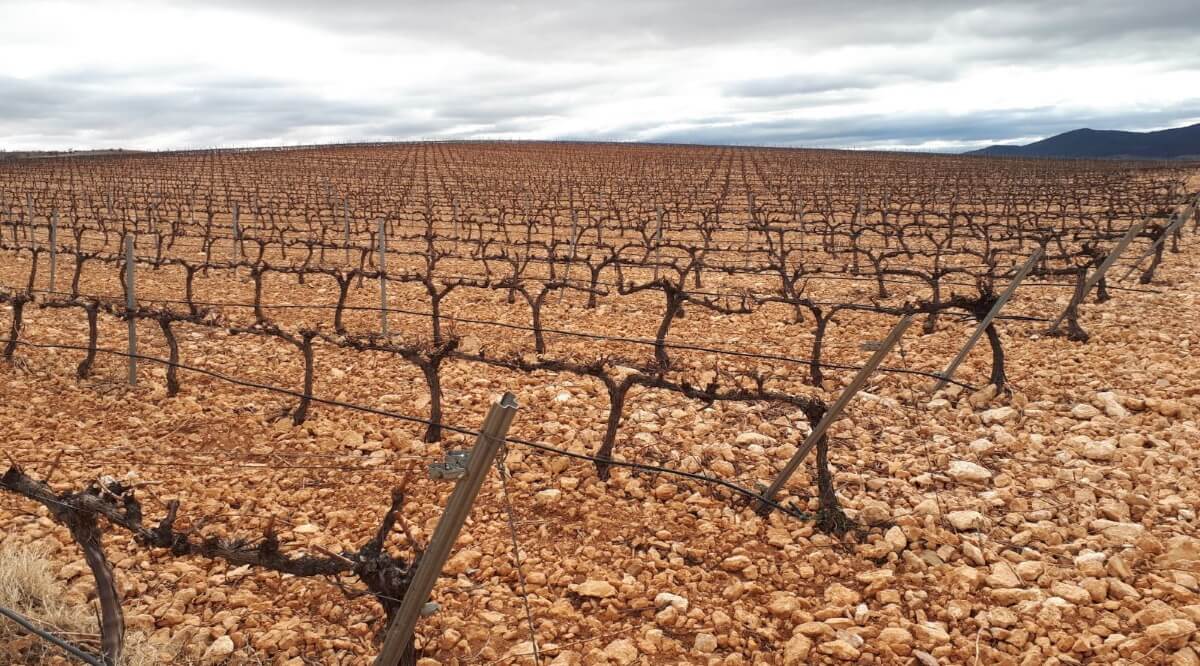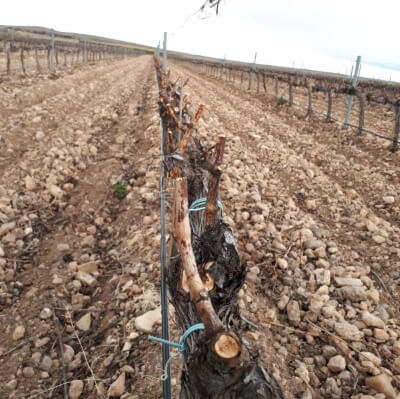Vine pruning: Healing pruning wounds and strategies for optimal budbreak

Vineyard in the period of vegetative dormancy
Vine pruning is an age-old practice, which over time has become as important as it is necessary for correct vine management. Technically it consists of removing canes, leafy shoots and leaves from vine branches so that the plant is cut back and prepared during the period of vegetative dormancy that takes place in winter.
Despite this being a crucial process to ensure harvest quality, it is also an aggressive act on the vine, since pruning its branches causes wounds that must be healed to prevent fungal growth or diseases. Seipasa designs solutions to help heal plant tissues damaged by pruning and to encourage new spring shoots.
Pruning a vine prevents it from growing in an uncontrolled way during winter. This process limits the vine's vegetative development, paves the way for a more uniform harvest by restricting the number of buds on the vine and encourages sap flow and distribution. It also helps to slow down ageing of vines by encouraging new healthy growth. In short, shaping the plant enhances optimal management and regulation of yields. Apart for keeping the vine healthy, pruning has a fundamental effect on the quality and quantity of the next grape harvest.
By this time of the year winegrowers should have already carried out what we term dry pruning earlier on. So-called winter pruning is carried out during the period of dormancy, between leaf fall in November and the onset of budbreak in spring.
It is here that it is important to take certain factors such as the age of the vines or climate conditions into account. Later pruning (towards the end of the winter) is recommended for younger vines since they are more sensitive to the effects of frost. Likewise, winter pruning carried out at the wrong time, before the plant enters its seasonal period of dormancy, is not recommended as it will stop the plant's reserves being transferred from the leaves to the rest of the plant's organs and will delay budbreak.
Dry pruning or winter pruning are not the only kinds of pruning carried out. Once budbreak has started, green pruning is a necessary task that consists of removing green parts such as some of the buds, excessive shoots, leaves etc.
Healing pruning wounds
 In all of these cases, pruning represents an aggression for the vine and, as such, should be kept to the minimum possible. Cuts cause wounds that must be protected in order to stop the vine from ageing and to prevent pathogens from getting hold and causing diseases in the vine's wood. Pruning the woody parts of a vine involves removing arms and canes. Depending on how severe the pruning carried out is, cuts may leave parts of the trunk exposed in which case it is advisable to apply some type of treatment that acts as a healing paste after pruning.
In all of these cases, pruning represents an aggression for the vine and, as such, should be kept to the minimum possible. Cuts cause wounds that must be protected in order to stop the vine from ageing and to prevent pathogens from getting hold and causing diseases in the vine's wood. Pruning the woody parts of a vine involves removing arms and canes. Depending on how severe the pruning carried out is, cuts may leave parts of the trunk exposed in which case it is advisable to apply some type of treatment that acts as a healing paste after pruning.
Bryosei is a biostimulant developed by Seipasa that regenerates and heals damaged plant tissues. Bryosei boosts plants' energy and activates their defence system. In addition, its copper content complexed with lignosulfonic acid is involved in the synthesis of lignin and contributes greatly to the wound healing process.
Budbreak and root system
Bryosei also encourages vegetative development as well as repairing tissues damaged by pruning; it is also a solution for achieving optimal budbreak once the plant has initiated this process.
Application of Bryosei after the onset of budbreak enhances the flow of sap through the vascular bundles which in turn promotes quick absorption and translocation through leaves, stem and roots. It is also rich in zinc, which activates the enzymes required to synthesise proteins as well as stimulating budbreak. The manganese in its composition helps in the synthesis of chlorophyll, essential for the production of carbohydrates.
Seipasa's strategy also includes the use of its Radisei root biostimulant, a solution that encourages root development and unblocks essential micro and macronutrients. With the onset of budbreak there is a peak in the plant’s need to absorb nutrients. Radisei helps vines to generate strong, well-developed root systems to absorb water, nutrients and also to accumulate and mobilise reserves which are crucial for the process ahead of them.
Although vines may appear to be dormant, they do not rest even during the deep winter months. Much of the success of harvests depends on the treatments applied at this time of the year that are aimed at managing growth and development and ensuring correct health, vigour and yield in vines.


